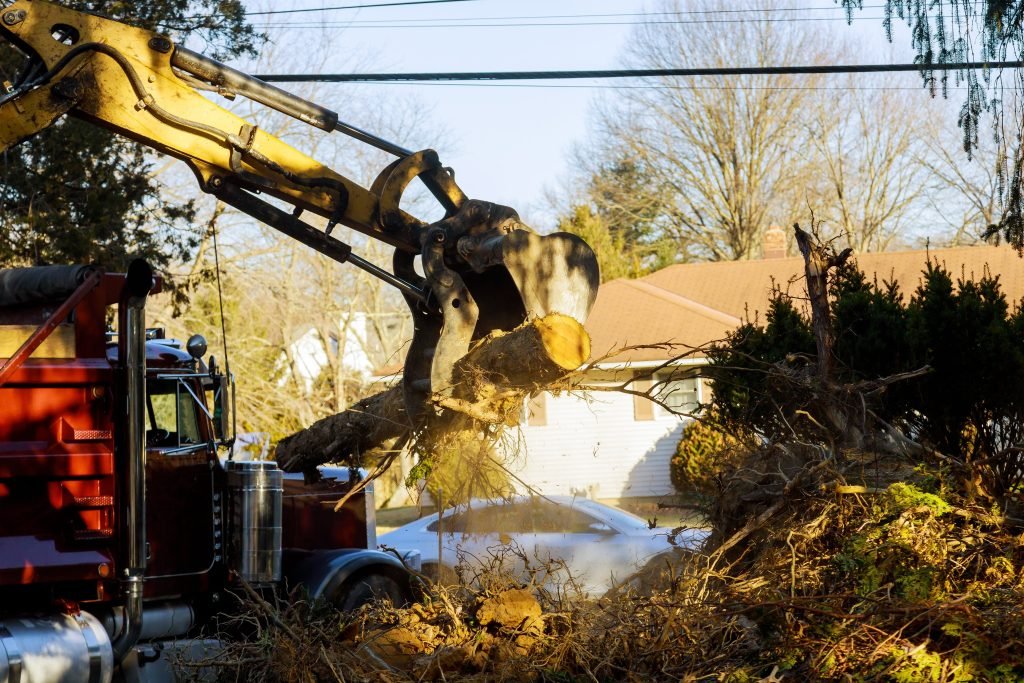Hey there, Rotorua homeowners! Whether you live lakeside, near native bush, or in one of our lovely tree-lined suburbs, most of us treasure the greenery around our place. But sometimes a tree can go from being a beautiful feature to a full-blown hazard. Here’s how to tell when it’s time to remove one — before it causes costly damage.
1. The Tree Is Leaning Dangerously
We love trees, but a tilted tree is a big red flag. Especially in Rotorua, where we can get strong winds and even storms that push a leaning tree over the edge. A tree that’s suddenly leaning, or one that’s gradually slanting more each year, may have root rot or unseen structural issues below ground.
Why it matters: A falling tree can crush your house, vehicles, or power lines—and even pose a serious safety risk to family members, pets, or neighbours.
What to watch for:
- Side roots becoming exposed or lifted.
- Cracks in the root flare or base of the trunk.
- Lean increasing after weather events.
Pro tip: If you notice a lean beyond about 15 degrees or a change from the year before, it’s a good idea to call in the professionals (hint: that’s us!).
2. Widespread Hollowing or Decay
Trees, like us, can suffer from rot and disease. But holes or decayed areas in the trunk or major limbs? That’s serious structural trouble. In Rotorua’s damp climate, fungal diseases can thrive—and rot can spread more quickly than you’d think.
Spotting the signs:
- Soft or crumbly wood, especially near the base.
- Mushrooms or toadstools growing on the trunk or roots.
- Cavities and hollows you can peer into or thump and hear a dull sound.
Why it’s serious: Decay weakens a tree’s core strength, making it unpredictable—it could snap or fall at any moment.
Rotorua ready: We’ll inspect the trunk, root zone, and canopy to locate decay, then guide you honestly—repairable or time to remove?
3. Major Root Damage or Instability
Roots anchor trees, absorb water, and feed them. If those roots are damaged, cut, or rotting, you’ve got a problem—and often, you can’t see it from above ground.
In growing suburbs like Lynmore, Springfield, or Ngongotahā, root disturbances are common—due to driveway installations, swimming pools, or neighboring works.
What to look for:
- Uplifted soil, cracked paths, or heaved patios near the tree.
- Trip hazards from surface roots or lifting soil.
- The tree shifts or wobbles when you push on its trunk (use your foot or a stick to test safely).
Biggest risk: A tree that easily rocks or shows exposed, damaged roots may uproot during a storm.
Rotorua know-how: Using specialized ground scanners and expert assessment, we identify critical root issues you might miss. If removal is recommended, it’s for your protection and safety.
4. Extensive Dead or Cracked Branches
It happens: a gust snaps a big branch, or limbs start dying back from the top. But if multiple major branches are dying, that could mean a bigger internal issue—or damage hiding from view.
Danger signs:
- Cracked, hanging, or “widow-maker” branches overhead.
- Dead timber throughout the canopy.
- Splitting bark, peeling wood, or large wounds.
Why this matters: A large falling branch can seriously damage your home, vehicle, or injure someone. Even one big crack is enough to make a tree unstable.
Expert pruning vs removal: Sometimes, removing those dangerous branches is enough. Other times, widespread failure means the whole tree needs to come down.
5. Tree Is Too Close to Structures or Powerlines
We see it all the time in Rotorua—trees planted too close to houses, patios, sheds, fences—or even powerlines. As these trees mature, they encroach on structures, roofs, and utilities. That leads to damage at best, and serious hazards at worst.
Common problems:
- Roots compromising foundations.
- Branches rubbing gutters, tiles, or breaking windows.
- Overhead limbs touching power cables (dangerous and often illegal).
The Rotorua challenge: With our volcanic soils and growing infrastructure, many properties aren’t ideal for big trees. Proper assessment is key.
What we do: We’ll map safe clearance distances, prune where possible, or remove the tree entirely when it poses ongoing risk.
✅ Bonus Tip: Your Gut Feeling
Sometimes, something just feels off—especially if a tree seemed pristine before. Unusual creaking, sudden bark loss, or funny growths are reasons to give us a call. It’s better to be safe than sorry.
What to Expect from Rotorua Tree Services
When you contact us, here’s our friendly, transparent process:
- Free on-site inspection – We come to your property in Rotorua.
- Risk assessment & report – We highlight issues, with photos and honest recommendations.
- Clear upfront quote – No hidden costs—just solutions.
- Safe removal or pruning – We use certified arborists with proper gear, protective gear, and public safety protocols.
- Cleanup & disposal – We chip or remove debris, and leave your property tidy.
Keep Your Property Green—and Safe
Trees are a beautiful part of Rotorua living, but they also demand care. Removing a tree might feel tough, but it often saves money, stress, or even tragedy down the track. We’re here to protect your home, your family, and your trees.
Ready to Assess Your Trees?
If you’ve spotted any of these signs—or just want someone peace of mind—call Rotorua Tree Services today. We’ll come to your home, give honest advice, and help you keep your property as safe and stunning as the Rotorua landscape you love.
👉 Call us now at 07 808 1828 or Click here for a free quote and see why Rotorua locals trust us with their trees.

